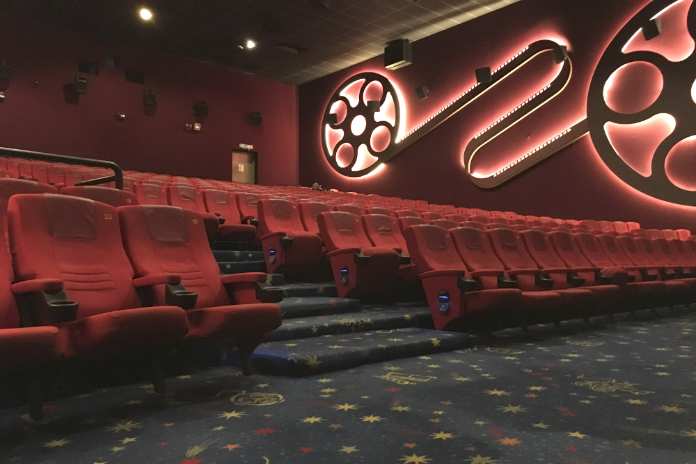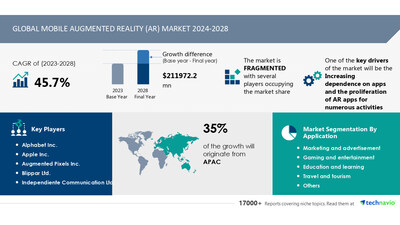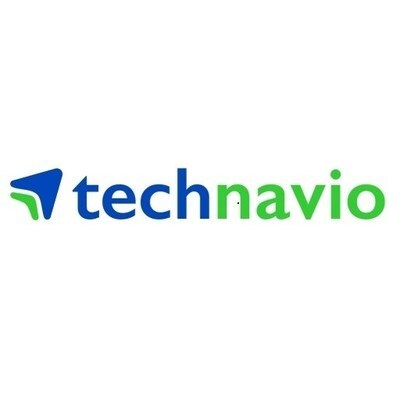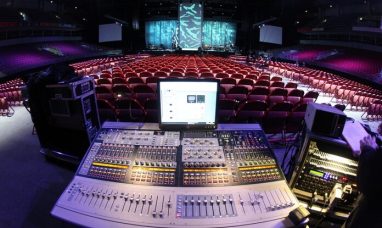NEW YORK, Aug. 7, 2024 /PRNewswire/ — The global mobile augmented reality (AR) market size is estimated to grow by USD 211.97 billion from 2024-2028, according to Technavio. The market is estimated to grow at a CAGR of over 45.7% during the forecast period. Increasing dependence on apps and the proliferation of ar apps for numerous activities is driving market growth, with a trend towards emergence of depth-sensing cameras. However, constraints in hardware capabilities used in mobile AR poses a challenge. Key market players include Alphabet Inc., Apple Inc., Augmented Pixels Inc., Blippar Ltd., Independiente Communication Ltd., Inglobe Technologies Srl, Lenovo Group Ltd., Magic Leap Inc., mCloud Technologies Corp., Niantic Inc., Plural Technology Pvt. Ltd., PTC Inc., QuestUpon, Robert Bosch GmbH, Seabery Augmented Technology SL group, Seiko Epson Corp., VividWorks Oy, weAR Srl, Wikitude GmbH, and Zugara Inc..
Get a detailed analysis on regions, market segments, customer landscape, and companies- View the snapshot of this report
|
Mobile Augmented Reality (AR) Market Scope |
|
|
Report Coverage |
Details |
|
Base year |
2023 |
|
Historic period |
2018 – 2022 |
|
Forecast period |
2024-2028 |
|
Growth momentum & CAGR |
Accelerate at a CAGR of 45.7% |
|
Market growth 2024-2028 |
USD 211972.2 million |
|
Market structure |
Fragmented |
|
YoY growth 2022-2023 (%) |
32.62 |
|
Regional analysis |
North America, APAC, Europe, South America, and Middle East and Africa |
|
Performing market contribution |
APAC at 35% |
|
Key countries |
US, China, Japan, Germany, and UK |
|
Key companies profiled |
Alphabet Inc., Apple Inc., Augmented Pixels Inc., Blippar Ltd., Independiente Communication Ltd., Inglobe Technologies Srl, Lenovo Group Ltd., Magic Leap Inc., mCloud Technologies Corp., Niantic Inc., Plural Technology Pvt. Ltd., PTC Inc., QuestUpon, Robert Bosch GmbH, Seabery Augmented Technology SL group, Seiko Epson Corp., VividWorks Oy, weAR Srl, Wikitude GmbH, and Zugara Inc. |
Market Driver
Depth-sensing cameras, also referred to as 3D cameras, offer advanced capabilities for mobile augmented reality (AR) experiences. These cameras can determine the distance of objects in the environment, enabling more immersive and realistic AR applications. The demand for such experiences is growing among consumers and businesses alike. Depth-sensing cameras allow for the seamless blending of virtual content with the real world, enhancing user engagement. Improvements in camera sensor technology and processing capabilities have made these cameras more affordable for mobile device manufacturers. The expanding range of AR applications, from gaming and entertainment to enterprise and education, requires more sophisticated interactions. Depth-sensing cameras enable developers to create contextually aware and interactive AR apps, driving their adoption and fueling the growth of the global mobile AR market.
The Mobile Augmented Reality (AR) market is experiencing significant growth with the integration of computer-generated data and GPS data in multimedia formats. AR is revolutionizing the educational system by providing immersive user experiences in schools and colleges through AR smart glasses. AR technology is enhancing online assessments, making them more interactive and engaging for students and teachers. Technologically advanced products like AR glasses and 3D cameras offer cost-effective solutions for collaboration and partnership between institutions and AR app development companies. AR is also making strides in commercial applications, including AR gaming, entertainment, and social media platforms. However, technical limitations, hardware requirements, security concerns, and limited consumer awareness pose challenges to the market’s growth. AR content creation is a key area of innovation, with potential applications in healthcare and other industries. Navigation performance and user interface are critical factors influencing the adoption of AR technology. Processor power and mobile device capabilities are essential hardware requirements for optimal AR performance. In summary, the Mobile AR market is trending towards immersive user experiences, cost-effective solutions, and innovative applications across various industries. AR technology’s continued evolution will depend on addressing technical limitations, ensuring security, and increasing consumer awareness.
Discover 360° analysis of this market. For complete information, schedule your consultation – Book Here!
Market Challenges
- The mobile augmented reality (AR) market faces several challenges that may hinder its growth. Older or less powerful devices may struggle to handle complex AR experiences, leading to reduced performance and lower user satisfaction. AR applications consume significant memory and storage resources, which can be limiting on devices with limited capacities. Running AR applications can also drain batteries quickly, potentially limiting the duration of AR experiences. A powerful graphics processing unit (GPU) is crucial for rendering AR content smoothly and with high-quality visuals. Inconsistent sensor quality or calibration issues can impact AR tracking and alignment accuracy. High-end AR experiences may require expensive mobile devices with advanced hardware specifications, which can be a deterrent for some potential users. These factors may restrict the market penetration of mobile AR during the forecast period.
- The Mobile Augmented Reality (AR) market presents significant opportunities for businesses, particularly in delivery platforms and remote assistance teleconferencing. However, challenges exist in collaboration with mobile device manufacturers to unlock the untapped AR potential. WebAR is a promising solution, but the market is still developing. Large technology companies are investing in AR design and interactive application development for e-commerce, retail, gaming, travel, and tourism industries. Challenges include hardware limitations, such as wireless charging and sensor integration, including GPS, compass, and visualization techniques. Niche markets like military applications, telemedicine, and accurate diagnoses offer promising BPS values. Skilled designers and developers are in high demand for UI/UX design and AR applications. The future of AR lies in the intersection of mobile technologies, virtual reality, and consumer engagement.
For more insights on driver and challenges – Request a sample report!
Segment Overview
This mobile augmented reality (ar) market report extensively covers market segmentation by
- Application
- 1.1 Marketing and advertisement
- 1.2 Gaming and entertainment
- 1.3 Education and learning
- 1.4 Travel and tourism
- 1.5 Others
- End-user
- 2.1 Enterprise
- 2.2 Consumer
- Geography
- 3.1 North America
- 3.2 APAC
- 3.3 Europe
- 3.4 South America
- 3.5 Middle East and Africa
1.1 Marketing and advertisement- The Mobile Augmented Reality (AR) market is experiencing significant growth. Businesses are integrating AR technology into their applications to enhance customer engagement and improve operational efficiency. AR allows users to view digital information overlaid on the real world, creating new opportunities for industries such as retail, real estate, and manufacturing. Companies like IKEA and Amazon are using AR to offer virtual product previews, while manufacturers are using it for remote assistance and training. The market is expected to reach USD198.17 billion by 2025, driven by increasing demand for interactive and immersive experiences.
For more information on market segmentation with geographical analysis including forecast (2024-2028) and historic data (2017-2021) – Download a Sample Report
Learn and explore more about Technavio’s in-depth research reports
The global Augmented Reality (AR) market is witnessing significant growth, driven by advancements in technology and increasing adoption across various sectors such as retail, healthcare, and manufacturing. The global Augmented Reality and Virtual Reality market is projected to expand at a substantial CAGR, fueled by rising investments and the integration of AR/VR in gaming, education, and real estate. Key players are continuously innovating, enhancing user experiences, and expanding their product portfolios to capitalize on emerging opportunities in this dynamic market.
Research Analysis
The Mobile Augmented Reality (AR) market is revolutionizing how we interact with digital content in the real world. AR technology overlays immersive digital information onto the physical environment, transforming user experiences on mobile devices. Capabilities of mobile devices, such as sensors, GPS, compass, 3D cameras, and hardware like smartphones and tablets, are driving the growth of AR. Entertainment applications and AR gaming are popular use cases, but the technology also offers opportunities in healthcare interventions, education, and industrial training. Technical limitations, hardware requirements, and security concerns are challenges, requiring skilled designers, developers, and UI/UX experts for AR content creation and interactive application development. AR smart glasses and mobile projection devices are future trends, while virtual reality and teleconferencing are complementary technologies. Overall, the AR market is expanding the boundaries of mobile technologies and offering new opportunities for innovation.
Market Research Overview
The Mobile Augmented Reality (AR) market is revolutionizing the way we interact with digital content by overlaying computer-generated data onto the real world. Mobile devices, with their advanced capabilities, serve as the perfect platform for AR technology. AR offers immersive user experiences in various sectors, including gaming, entertainment, social media, healthcare, education, and more. However, technical limitations and hardware requirements pose challenges. Security concerns and limited consumer awareness are also obstacles to wider adoption. AR app development is ongoing, with innovative applications emerging in areas like teleconferencing, remote assistance, and wearable devices. The market includes niche applications in sectors like e-commerce, retail, travel, and tourism. Government investments and collaborations with large technology companies are driving growth in this sector. AR design requires skilled designers and developers, with a focus on UI/UX design and interactive application development. Sensors like GPS, compass, and visualization techniques are essential for accurate AR experiences. The potential for AR in healthcare, education, and other industries is untapped, with applications ranging from telemedicine to self-efficacy interventions. Mobile AR apps are available on smartphones, tablets, and mobile projection devices. Cost-effective solutions and commercially available, technologically advanced products are driving consumer engagement. Virtual reality and AR are complementary technologies, with AR offering a more interactive and contextually relevant experience.
Table of Contents:
1 Executive Summary
2 Market Landscape
3 Market Sizing
4 Historic Market Size
5 Five Forces Analysis
6 Market Segmentation
- Application
- Marketing And Advertisement
- Gaming And Entertainment
- Education And Learning
- Travel And Tourism
- Others
- End-user
- Enterprise
- Consumer
- Geography
- North America
- APAC
- Europe
- South America
- Middle East And Africa
7 Customer Landscape
8 Geographic Landscape
9 Drivers, Challenges, and Trends
10 Company Landscape
11 Company Analysis
12 Appendix
About Technavio
Technavio is a leading global technology research and advisory company. Their research and analysis focuses on emerging market trends and provides actionable insights to help businesses identify market opportunities and develop effective strategies to optimize their market positions.
With over 500 specialized analysts, Technavio’s report library consists of more than 17,000 reports and counting, covering 800 technologies, spanning across 50 countries. Their client base consists of enterprises of all sizes, including more than 100 Fortune 500 companies. This growing client base relies on Technavio’s comprehensive coverage, extensive research, and actionable market insights to identify opportunities in existing and potential markets and assess their competitive positions within changing market scenarios.
Contacts
Technavio Research
Jesse Maida
Media & Marketing Executive
US: +1 844 364 1100
UK: +44 203 893 3200
Email: media@technavio.com
Website: www.technavio.com/
![]() View original content to download multimedia:https://www.prnewswire.com/news-releases/mobile-augmented-reality-ar-market-size-is-set-to-grow-by-usd-211-97-billion-from-2024-2028–increasing-dependence-on-apps-and-the-proliferation-of-ar-apps-for-numerous-activities-boost-the-market-technavio-302215584.html
View original content to download multimedia:https://www.prnewswire.com/news-releases/mobile-augmented-reality-ar-market-size-is-set-to-grow-by-usd-211-97-billion-from-2024-2028–increasing-dependence-on-apps-and-the-proliferation-of-ar-apps-for-numerous-activities-boost-the-market-technavio-302215584.html
SOURCE Technavio

Featured Image: Megapixl @ Karlstury

















